Software Development in Poland - Trends in 2025
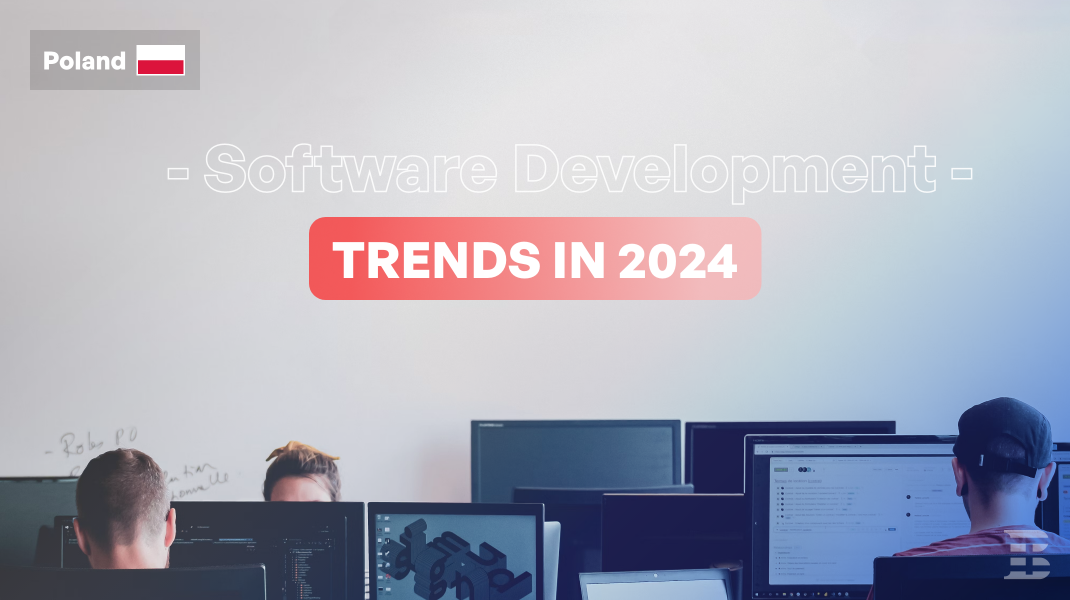
Polish software developers are not just following trends, but setting them. They are always up-to-date with the latest technologies and innovations, such as artificial intelligence (AI), intelligent automation tools, and other cutting-edge tech solutions.
In terms of revenue, the market size of the software development industry in Poland is predicted to be €8.3 billion in 2024. As of the same year, there are 91,365 professionals employed within the software development sector in Poland.
In this article, we will analyse what are the biggest trends for software development in 2024.
Artificial Intelligence and Machine Learning
One of the biggest trends of the last few years, especially the last two, has been AI and machine learning. In 2024 the focus will change from improving the foundational models to finding better ways to use and interact with them and build new products on top of them.
Until now the majority of the interaction with AI models has been through consumer-facing products (chatbots, coding assistants) like OpenAI’s ChatGPT, Google’s Gemini (formerly Bard) or tools like GitHub Copilot which offer a more effective interface for interacting with specific software development use cases. Over the next year, we expect developers to start building a lot more AI-powered products and startups that will utilize already existing APIs, to bring customers functionalities that extend beyond the boundaries of the already well-known chatbots.
OpenAI is already the biggest player in the LLM APIs market, providing access to its latest models at reasonable prices, with Google being expected to start unveiling more of its APIs in 2024.
The artificial intelligence industry in Poland is expected to grow to a value of US$1,387 million by 2024. According to Statista, the market is projected to increase at 16.78% annually (CAGR 2024–2030), with a market volume of US$3,518 million by 2030.
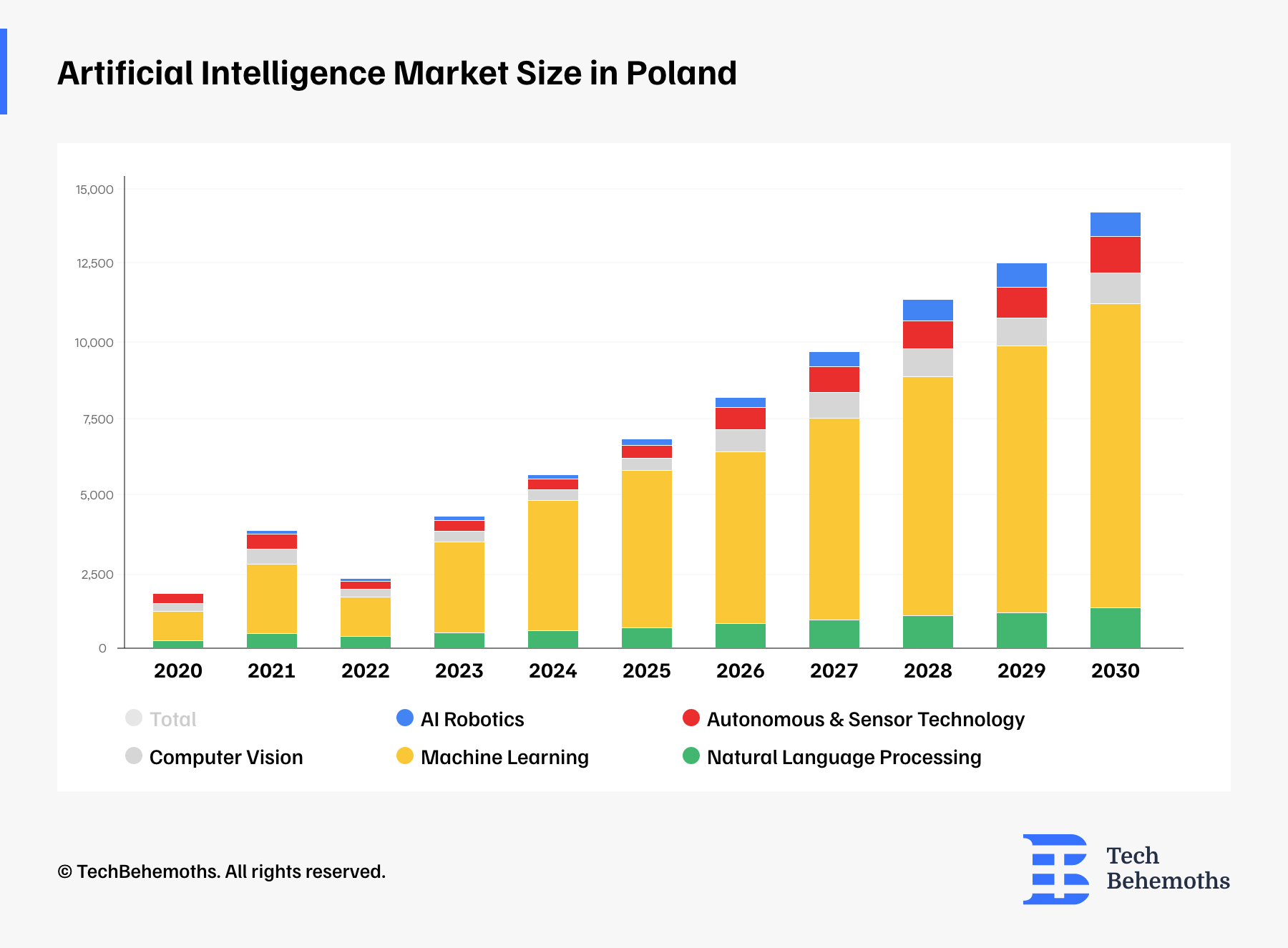
Human Capital
According to the research titled “State of Polish AI” published by LWIT, the following facts regarding the AI talent pool in Poland are presented:
-
Poland ranks 7th in the EU with a 4% AI talent pool share, and at the same time ranks 1st place in the entire CEE region.
-
Poland ranks 24th in terms of AI intensity in the active workforce and has 40% AI intensity of Estonia, the digital leader of the CEE region.
-
Poland ranks 24th in the EU in terms of “Women in AI” (13% of employees are women).
In Poland, 45% of companies that use artificial intelligence are located in Warsaw. This is because many international corporations have chosen to establish their headquarters in Warsaw. Following Warsaw, there are cities like Kraków, The Tricity, Wrocław, Poznań, and Katowice. Learn more about some lesser-known tech cities of Poland.
The last 10 years show the tremendous progress that Poland has made in the R&D sector, including AI development. In 2010 there were only a handful of R&D centers. However, that was just the beginning of the growing trend that is now achieving its boom. For some of the centers, AI remains the leading technology used in product or service development… - says Agnieszka Szweda, Expert in the Center for Strategic Investments of the Polish Investment and Trade Agency (PAIH).
Python is Asserting its Dominance
Python will continue to be the dominant programming language in 2024 due to its user-friendly interface, adaptability, and extensive applications in web development, data science, artificial intelligence, and machine learning. With a vast ecosystem of libraries, it's a top choice for beginners and advanced developers. According to the PYPL index, Python has the highest growth rate of 19%.
At the same time, Python is one of the top technologies among tech specialists in Poland, with 94,000 developers using Python. Other popular programming languages are Java, JavaScript, C#, C++, PHP, and .NET.
According to the 2023 Stack Overflow survey, Python is the most requested programming language for developers to learn, surpassing Java for the first time since 2012. Additionally, it has won the TIOBE Programming Language of the Year award three times in a row, which is granted to the language that has seen the most annual rise in ratings.
Python is the primary language used in AI and machine learning due to the vast number of tools and frameworks, like Keras, PyTorch, TensorFlow and many others, that are written in Python. These frameworks and libraries allow IT professionals to perform complex and important procedures by analyzing large data sets, making accurate predictions, enhancing business efficiency, reducing production costs and increasing productivity.
With AI becoming more popular and more widely used in everyday and professional products, which we described in the first chapter, we can only expect Python to gain even more popularity as well.
Low-Code and No-Code Solutions
The next big trend for 2024 is low-code and no-code solutions. No-code and low-code systems are predicted to become more popular in the upcoming years due to their many technological and commercial benefits.
Gartner forecasts that low-code platforms will account for more than 65% of the market by 2024. According to studies and projections, the global market for low-code development platforms is expected to reach $187 billion by 2030 and continue to grow fast. However, industry analysts expect that they will never fully replace traditional application development or remove human interaction.
By 2024, low-code tools will account for over 65% of application development. Additionally, cloud-native approaches will be used to develop over 500 million apps and services by 2023.
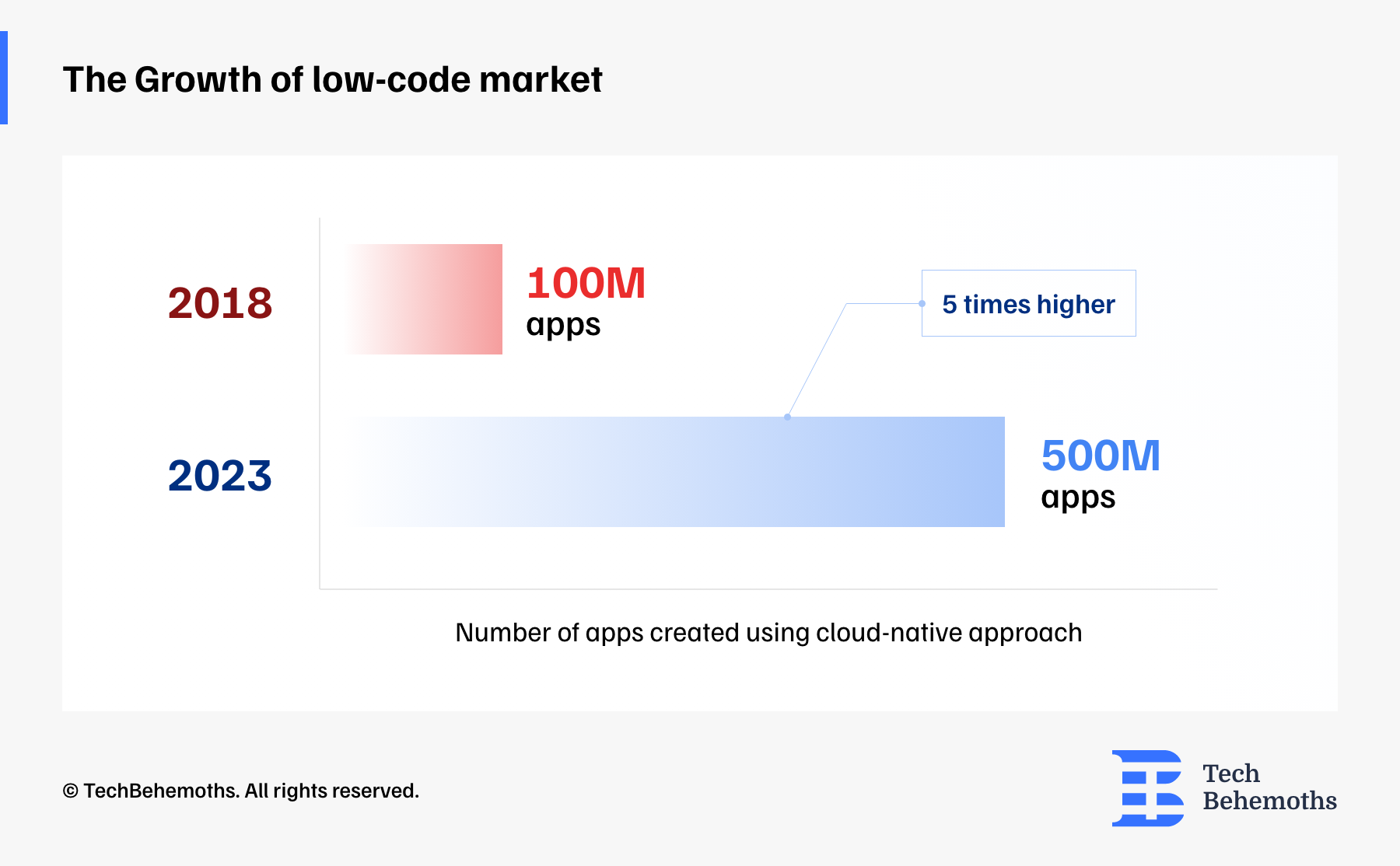
In traditional software development, professionals use programming languages (like the above-mentioned Python, JavaScript, Go and others) to write their programs and applications, this requires both programming expertise and planning the different stages of the software development lifecycle.
Low-code and no-code development platforms are software development tools that allow both experienced and less-experienced developers to create applications quickly and efficiently using a visual interface, especially when these tools are being updated to benefit from integration with AI models. These help users build applications that can solve business problems without requiring advanced coding skills.
A list of the best low-code development companies in Poland are:
Here are the top 8 low-code trends of 2024 that your business should adopt for software development.
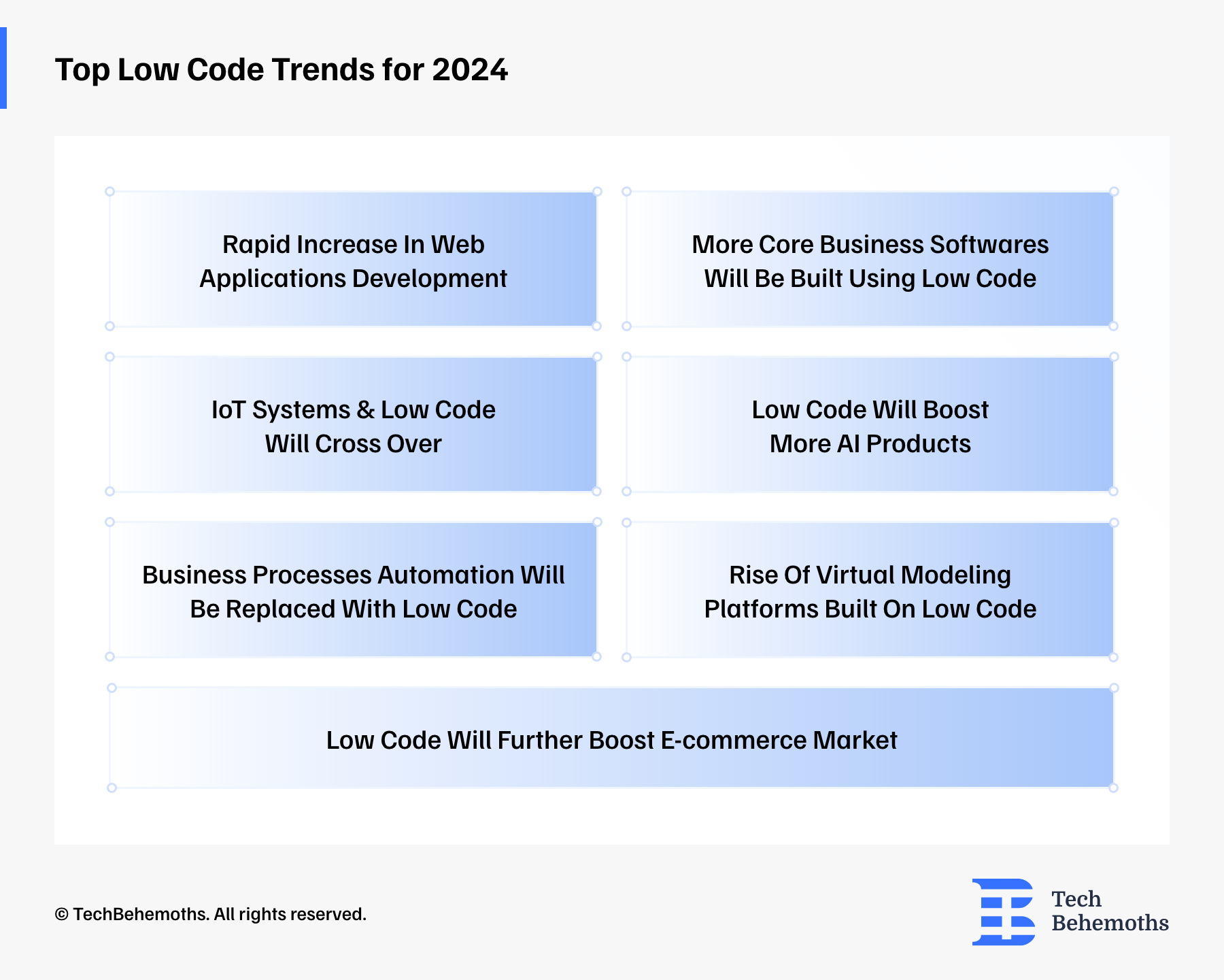
Data Privacy and Security
The next major trend is a big push towards ethics, data privacy and security being top priorities for most tech companies. In the past few years, we have seen that tech companies are vulnerable to a certain degree, and because of this, we will see a bigger push towards ethics, privacy, and security.
Revenue in the data security market in Poland is projected to reach $13.25 million in 2024, with an expected annual growth rate (CAGR 2024-2028) of 12.32%. This will result in a market volume of $21.09 million by 2028.
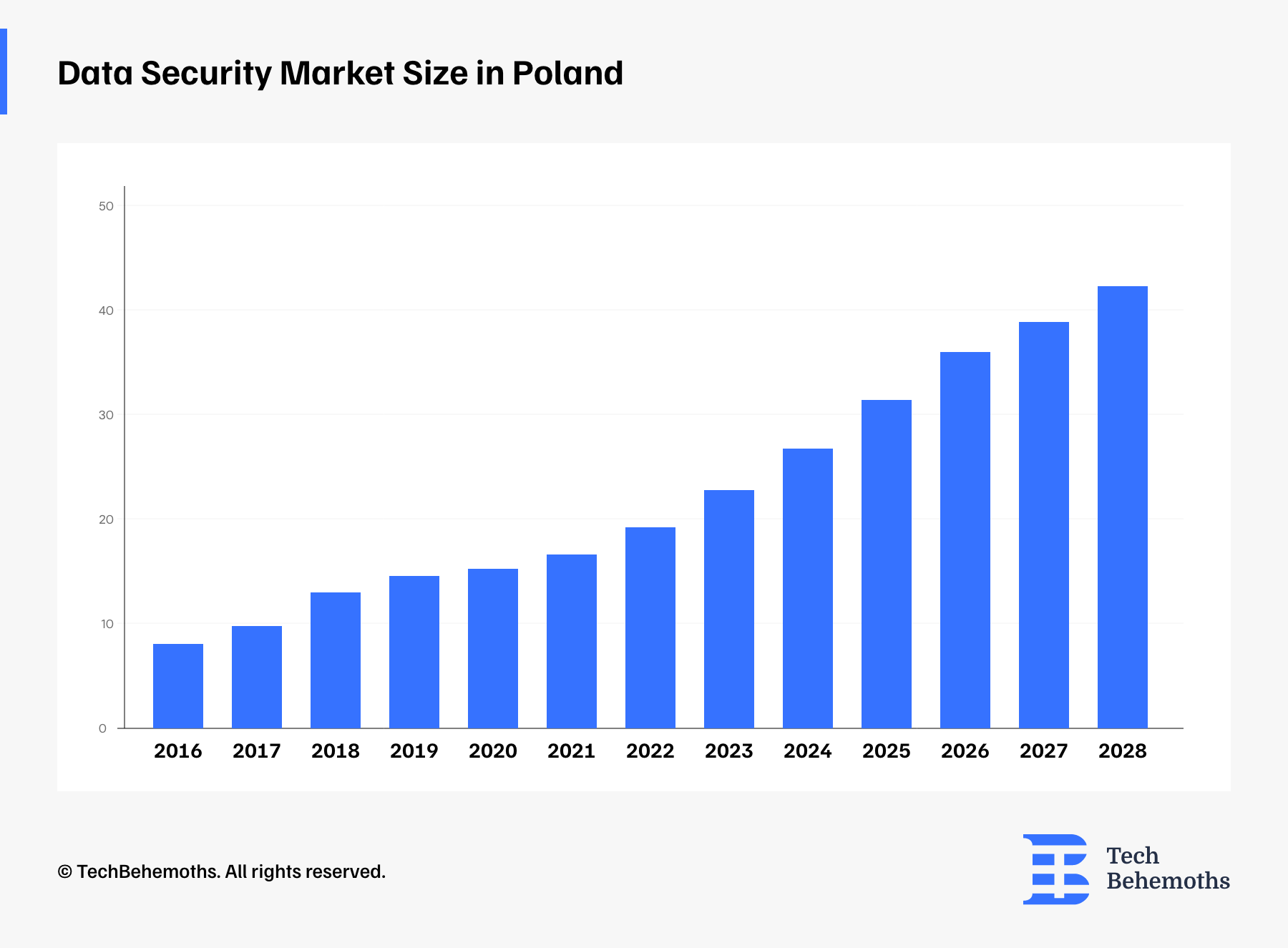
Moreover, Poland ranks highest in cybersecurity, according to the National Cyber Security Index, which measures a country's ability to prevent and manage cyber threats, with the highest score of 90.83 as of December 2023.
Cloud Security Segment Drives the Market Growth
The use of cloud-based solutions in Poland is below the European average, but it has been a trend for large companies, including financial institutions. The trend is expected to continue and grow in the future, as large cloud providers have opened “local operating zones” in Poland (Warsaw). Google Cloud (GCP) will open local zones in 2021 and Microsoft Azure alongside Amazon AWS in 2022. These zones allow software developers much faster access to data needed within Poland, as well as enable use cases in which data storage was required to be local by law.
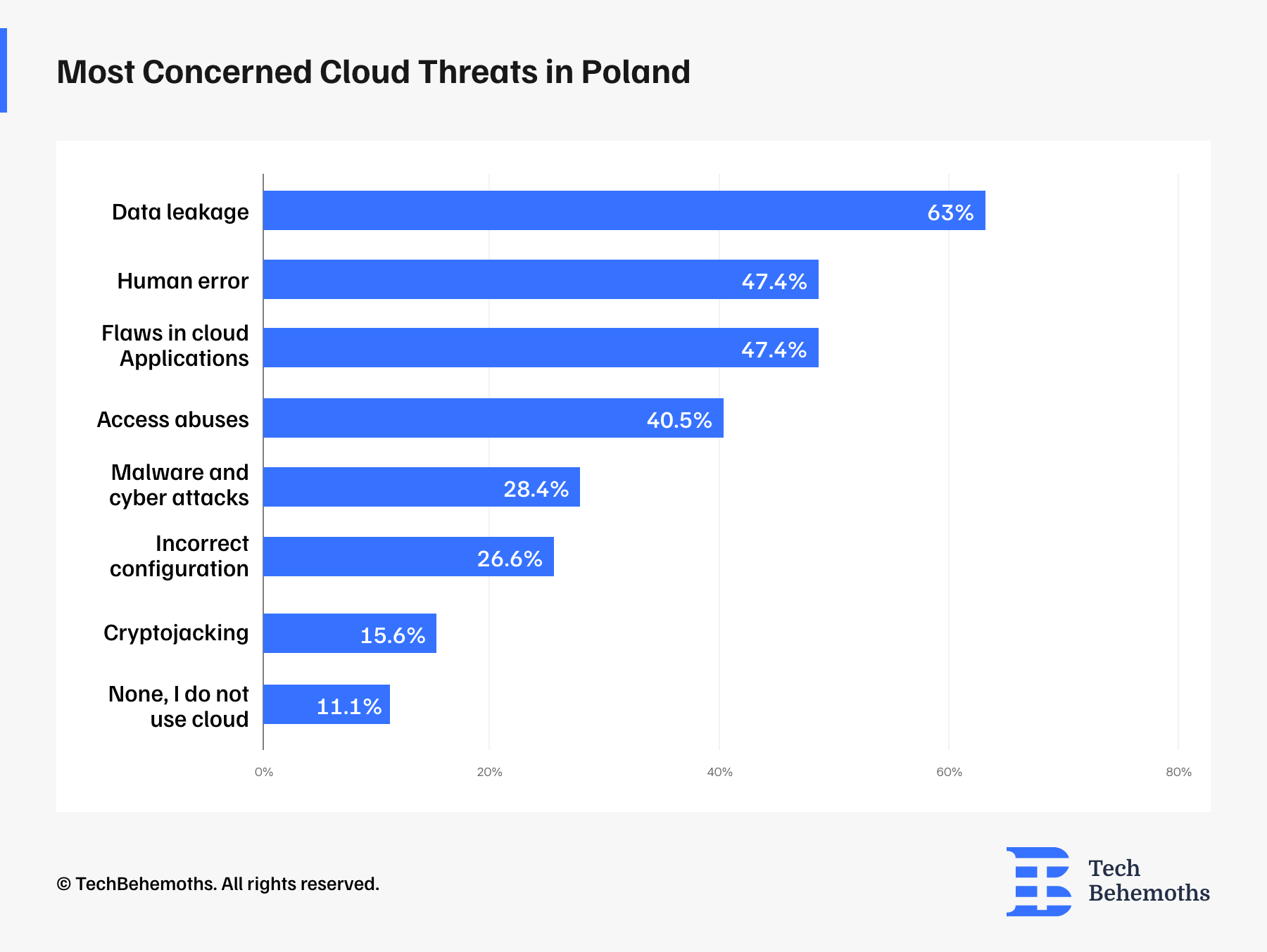
The Poland Cybersecurity Strategy 2019-2024 has the objective of improving the safety of information systems, service providers, infrastructure, digital services, and public administrations dealing with cyber threats. This strategy will support national security by increasing resilience across public, military, and private sectors, and raising citizen awareness for information protection.
AR/VR and the Metaverse
The metaverse market in Poland is increasing rapidly, with a total value projected to reach US$2,941 million by the end of 2030. This expansion is driven by the rising popularity of virtual reality (VR) and augmented reality (AR) technology, as well as the introduction of new content, applications, and services. The demand for these technologies comes from the need for immersive and interactive experiences, including real-time interaction.
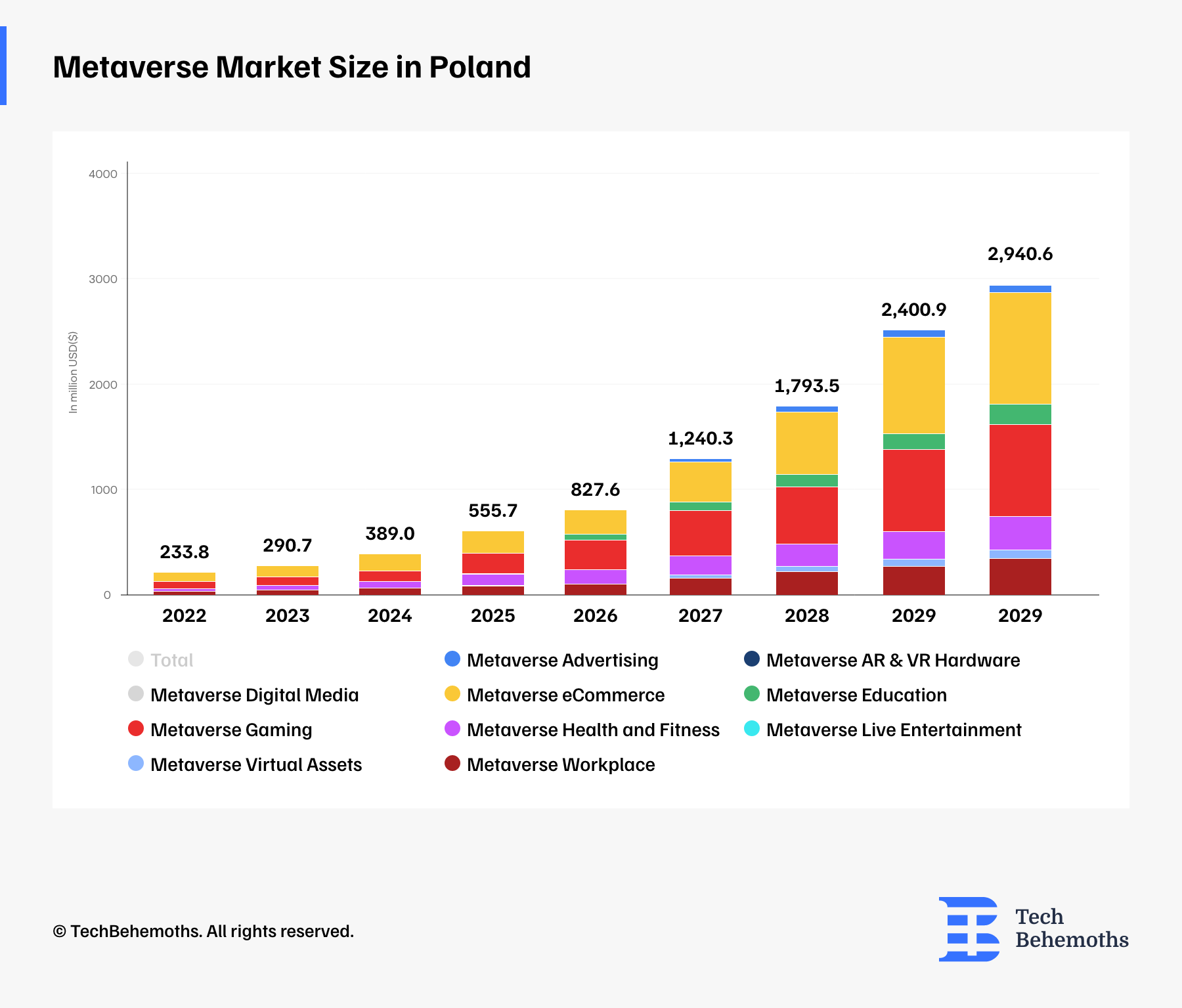
The Rise of Virtual Economies
The Metaverse, a relatively new concept, has been applied in over 30 industries, including banking in Poland. Poles are most likely to use it for savings and investment advice (64%), learning about the bank's offer (65%), and submitting complaints (58%). The opportunity for financial education in virtual space is highly rated for both children and adults. About 10% of bank customers are ready to use the Metaverse as their main service channel, according to the “Poland Meets Metaverse”, report conducted by Mastercard Poland.
AR/VR as Educational Tools
Poland is launching a series of free training workshops for teachers on using augmented and virtual reality in their classrooms. The workshops, held by Meta's Warsaw community hub, will feature Meta Quest 2 headsets and educational apps. The training is open to all professional levels and will also include a NASK-led workshop on the impact of VR on students and best practices for safely using new technologies in education.
The workshop's goal is to educate teachers on innovative technologies and their benefits in the core curriculum, focusing on developing creative skills and digital competencies. Research indicates that VR can improve learning skills like comprehension, memorization, engagement, attention span, and motivation.
Using AR and VR as educational tools is a breakthrough that changes the way of learning, increasing students’ cognitive processes and their engagement. I look forward to following the progress of the Meta VR & AR for Education program in Poland. I am proud that Meta, a U.S. company, provides modern technological solutions and know-how to develop this innovative project. – Mark Brzezinski, US ambassador to Poland
By 2026, 25% of people will spend at least an hour daily in the metaverse, engaging in activities such as shopping, studying, working, and building virtual homes. The metaverse is gaining popularity as it offers new dimensions for interacting with consumers and connecting with them in exciting ways, according to a recent report by Gartner
Of course, we couldn't end our talk about AR&VR without mentioning the Apple Vision Pro launch from earlier this year. While it’s a first-generation product and still for a very niche target audience, with Vision Pro Apple launched a new type of computing platform and a lot of apps are required. We expect Polish software developers to take an active role in building the applications that will be used by future Vision Pro users.
Conclusion
Nowadays, to remain competitive and generate more revenue, businesses and software developers should stay informed about current trends in the global market. Software development services are effective ways to expand influence and increase income for companies.